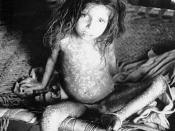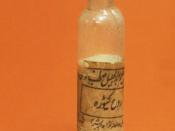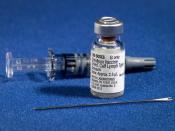Note: Includes overview and history of the disease. Citations included, but not in proper form.
Smallpox vaccination for critical public service workers
There has been much publicity about the threat of bioterrorist attacks in the United
States. Usually, the agent cited as the most likely to be used is the smallpox virus. The
federal government has recommended that only certain public health and health care
workers be vaccinated. If a major outbreak of smallpox were to occur however, the
country would need to rely on more than just public health and health care workers.
Instead, members of all critical areas of public service, such as police officers and
fire/rescue personnel would be needed and so, they too, should be vaccinated.
The Centers for Disease Control and Prevention have published a list of diseases
that are of the highest concern as bioterrorism agents. Each agent has one or more of
the following characteristics: it can be easily spread from person to person, it can cause
high mortalityrate, it can cause public panic and fear, or it can require special action
for public health preparedness.
Topping this list of these possible biological threats is
the smallpox virus.
Humans have faced the threat of smallpox for thousands of years. According to
historians, smallpox first developed as a disease among people in ancient Egypt,
sometime before 1500 B.C. From there it most likely traveled eastward along the trade
routes to Persia and India. By A.D. 580-581, a fatal disease closely resembling smallpox
was sweeping across northern Italy and southern France. The spread of smallpox
continued and an epidemic of the disease swept through western Europe during the
1300s. The virus, unimpeded, was rampant in Europe during the 18th century and
approximately 60 million people died as a result. When Europeans began their...


